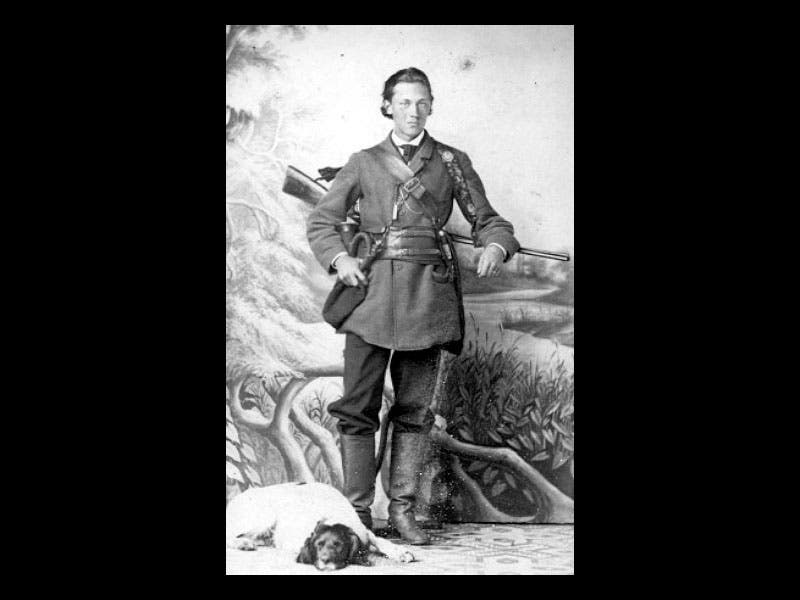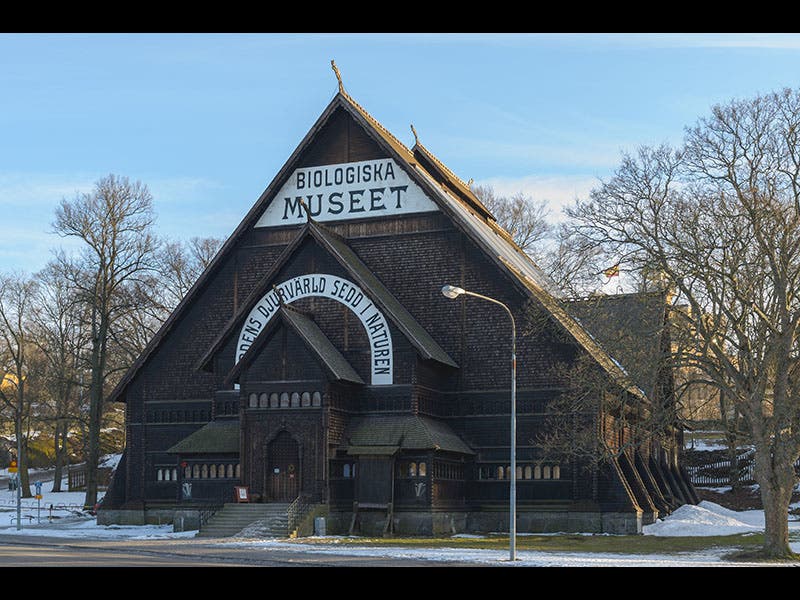Scientist of the Day - Gustaf Kolthoff
Gustaf Kolthoff, a Swedish taxidermist and explorer (second image), was born Dec. 14, 1845. Kolthoff believed that a stuffed bird on a shelf in a museum is a poor imitation of nature, and he set out to design more naturalistic settings in which to view wildlife. For a while he created private dioramas in Uppsala, and then, in 1893, Kolthoff founded the Biologiska Museet (Biological Museum) in Stockholm (third image). The visitor entered a viewing area from a central staircase, and then all around the viewer were dioramas depicting the rugged Swedish seacoast, or an arctic forest, or even a cave (first, fourth, and fifth images). Kolthoff populated his dioramas with more than 4000 specimens that he himself had mounted. This was the first museum anywhere to use dioramas on a grand scale (although Lewis Dyche of the University of Kansas was at this very moment opening a large diorama of American wildlife at the 1893 World’s Columbian Exposition in Chicago). Kolthoff commissioned a noted wildlife painter, Bruno Liljefors, to do the sweeping backgrounds, which greatly added to the attractiveness and popularity of the dioramas.
The Biologiska Museet had been open continuously until just this year, when it was closed for extensive renovations. The Museum is on the same Stockholm island, Djurgården, as Skansen, the famous open-air museum that was founded two years before the Biologiska Museet.
Dr. William B. Ashworth, Jr., Consultant for the History of Science, Linda Hall Library and Associate Professor, Department of History, University of Missouri-Kansas City. Comments or corrections are welcome; please direct to ashworthw@umkc.edu.











